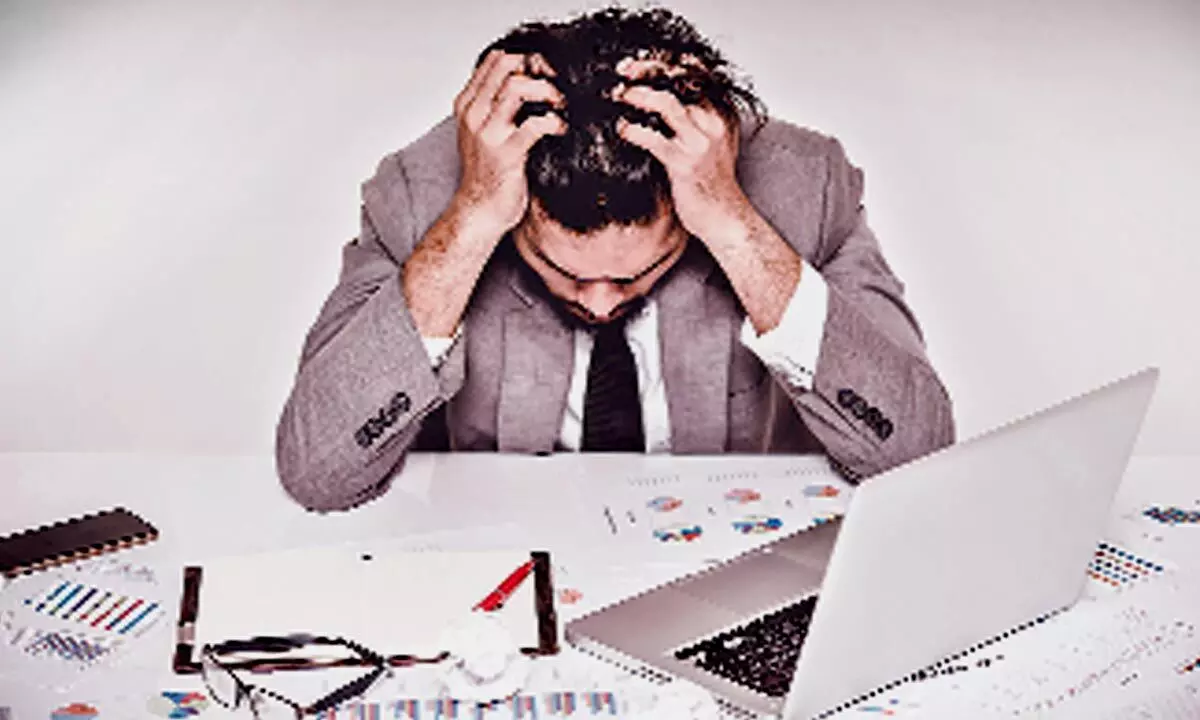How to beat the work burnout
Employee burnout seems to have reached an all-time high, with 52% of survey respondents in an Indeed study indicating that they feel burned out
image for illustrative purpose

On the other end of the spectrum, if you evaluate your burnout as a function of your personal responses to work, introspection is necessary. For instance, if you think that prolonged exposure to screens during your work-from-home time is causing you health troubles, you can find ways to schedule your assignments in a way that you find breaks to not face a screen for some time. You can develop your own solutions, such as doing some work off the screen and then putting it all together digitally. Finding time to try out activities you enjoy or have been wanting to explore can also help you revitalize yourself. Above all, it is essential to find space and time to keep yourself in a position to contribute effectively
Burnout is a slow, insidious experience. Burnout is not afraid of playing the long game. To prevent burnout, we need to play a long game, too
- Sally Clarke
Getting tired is not a spectacular event in the present epoch. As the grind at work and in the world overwhelms us, we push the envelope everyday in terms of outliving our almost chronic exhaustions. However, is it necessary to purchase professional accomplishment and personal fulfilment at the cost of our well-being? It is to be understood that while working hard has its costs, it is detrimental to let fatigue become the norm of our professional functioning. Well-being, a good life and feeling inspired at work reconstitute our labour power to show up at work everyday and deliver optimal results. Accordingly, an unravelling of the problem of widespread professional fatigue is necessary.
As Forbes reports, in 2020 Gallup identified a reverse trend dubbed, the "Well-Being-Engagement Paradox" in which the well-being of the American workforce plummeted to lows not seen since the 2008 Great Recession. "Employee engagement and well-being became disconnected from each other and went their own ways," according to Gallup. As this trend continued during the 2021 pandemic, work as we know it got turned upside down. An exhausted workforce, burning the midnight oil at home, claim they became modern-day workaholics, 40 per cent by one account. Employee burnout seems to have reached an all-time high, with 52 per cent of survey respondents in an Indeed study indicating that they feel burned out. It is thus time to rethink our survival in the terrain of modern work itself. The pandemic might have worsened things but the problem has been here for a while and will stay beyond the pandemic as well and consequently, merits discussion.
We must distinguish normal exhaustion from working hard from feeling tired, demotivated and stagnant in the long run. It is crucial to identify the signs of a professional burnout as early as possible. As Mokokoma Mokhonoana notes, "Being tired is pleasant when you think what has tired you was worth the portion of your life." The problem occurs when the spiritual rewards and fulfillment you garner in a day cannot override the fatigue you feel. The signs are not difficult to spot. You can feel an increased alienation and disengagement from work, can feel overworked and ceaselessly stressed about projects. You may feel uninspired, disconnected from motivations and experience brain fog and other physical and mental problems during and beyond work. When these signs appear, it is probably time to come up with a new strategy to go about your workday.
It is to be identified whether the work regime is giving you a hard time or whether it is your handling of it. If you are placed in a non-conducive work schedule, it is a good idea to speak to superiors and colleagues and find out ways to find time and space for recharging your batteries. It is good to develop strong ties with your team since work might feel dreary in the absence of a professional community. Dysfunctional work dynamics have to be taken care of for meaningful productivity and for that, you must be willing to discuss concerns with supervisors and co-workers and foster communitarian ties.
On the other end of the spectrum, if you evaluate your burnout as a function of your personal responses to work, introspection is necessary. For instance, if you think that prolonged exposure to screens during your work-from-home time is causing you health troubles, you can find ways to schedule your assignments in a way that you find breaks to not face a screen for some time. You can develop your own solutions, such as doing some work off the screen and then putting it all together digitally. Finding time to try out activities you enjoy or have been wanting to explore can also help you revitalize yourself. Above all, it is essential to find space and time to keep yourself in a position to contribute effectively.
Work is more than just a mechanism to earn our livelihoods. It is a commitment to ourselves and the society at large, to make our individual and collective lives more rewarding. Thus, it is incumbent upon us to not let a culture of burning ourselves out distract us from our duties and take away the joy of professional endeavour. Professional fatigue is just one among many hurdles to make the world better and can be taken care of with the right interventions.
(The author is Chief Impact Officer at Recykal Foundation)

